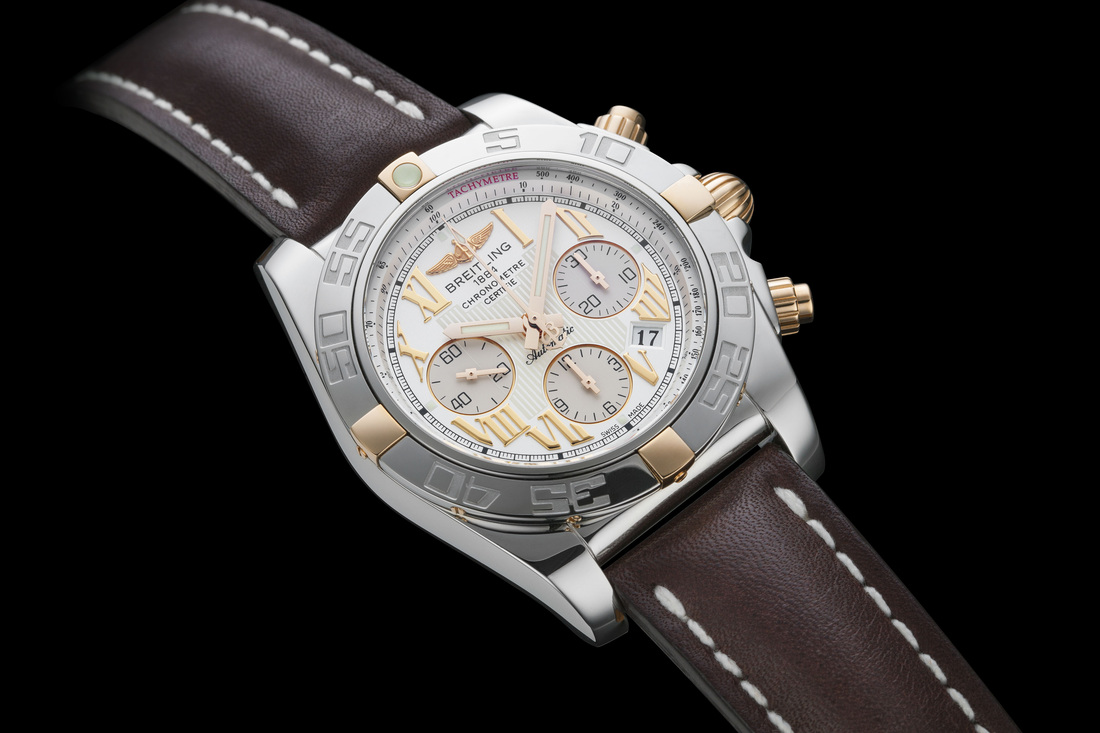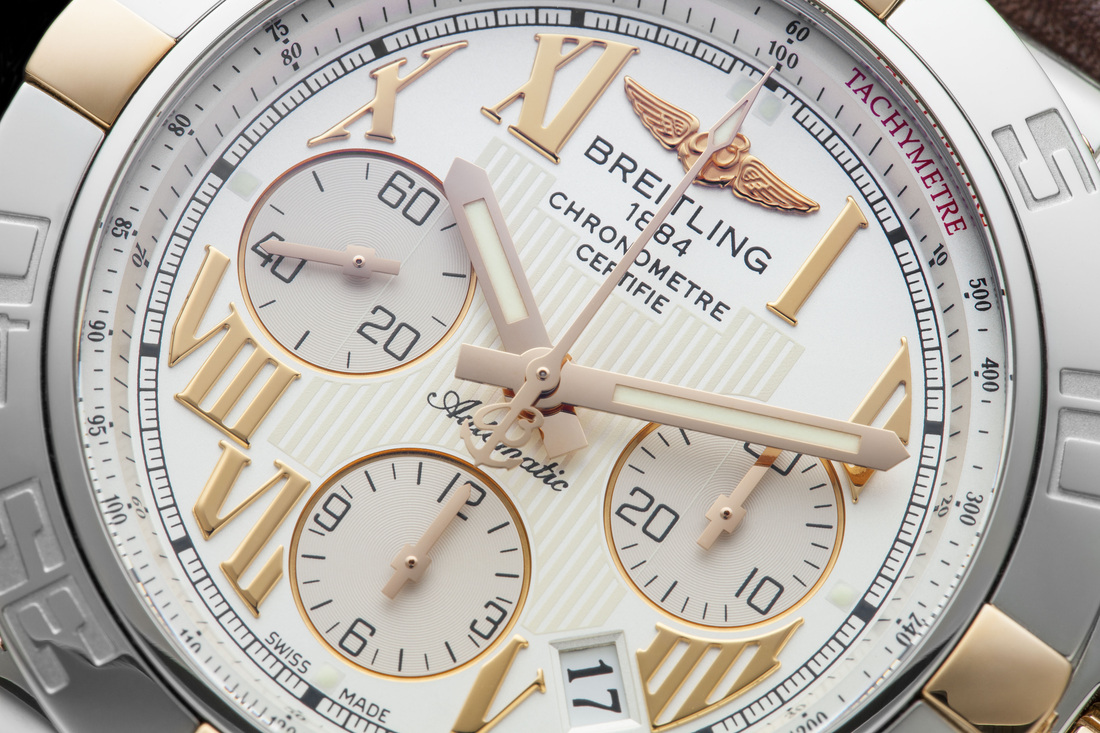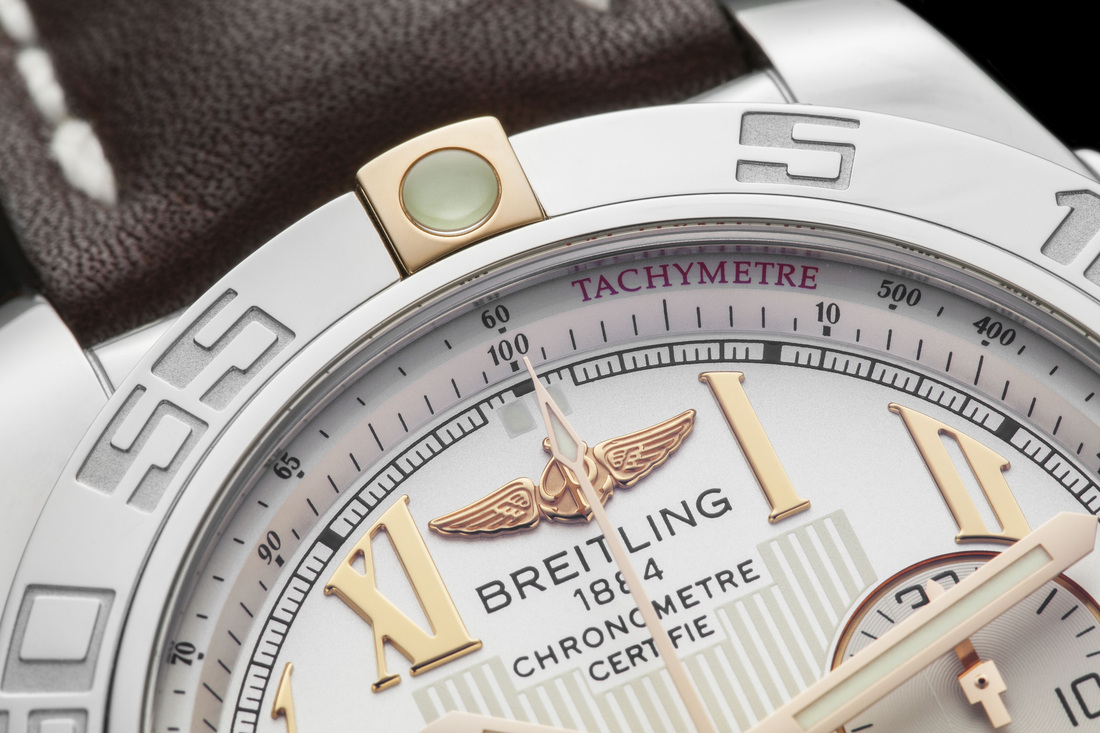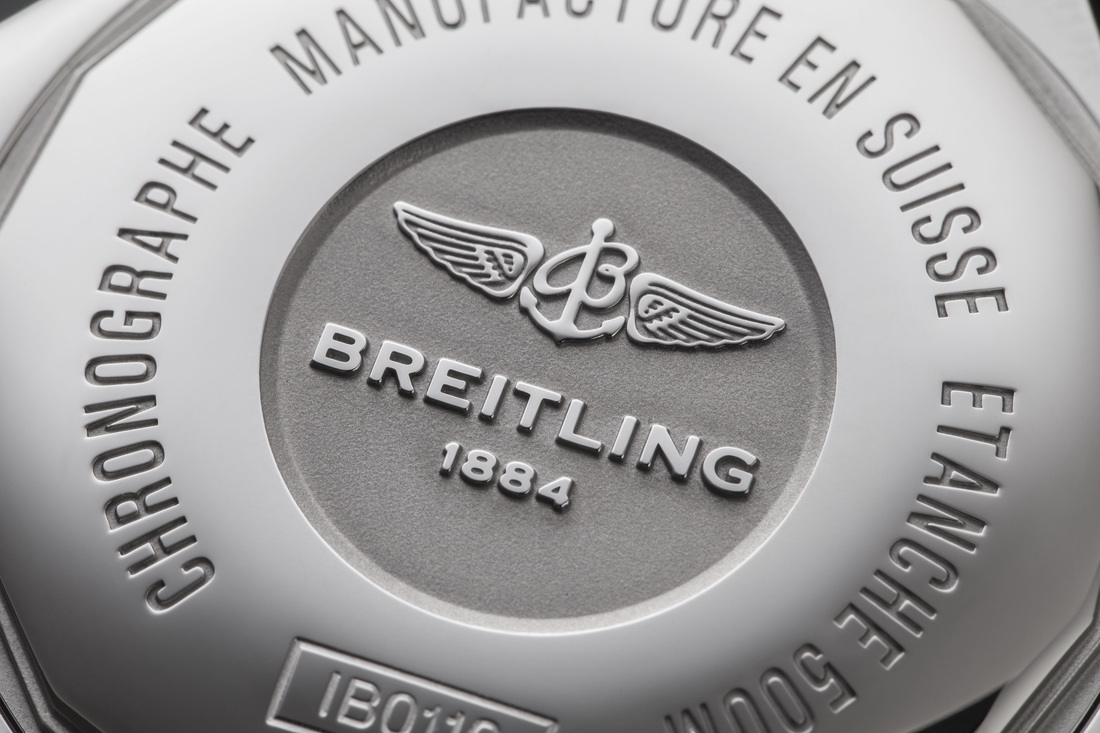|
The first guest post to appear on It's All About Watches: When Breitling’s Chronomat went on sale in 1942 (picture here), it was the first time a slide rule had ever been seen on a chronograph. This nifty gizmo used two circular scales—the outer one rotated by the bezel—as a kind of advanced, pre-electric calculator intended for use by scientists, engineers and mathematicians. It was one of the first technical watches of the time not intended for military use, offering a vision of an industrial future after the war.The brand, founded in 1884 by Léon Breitling, already had a strong history in the chronograph department. Breitling wowed the scientists of the day with the accuracy of his mechanical timekeepers, but it was his son Gaston who decided to focus the company’s efforts on making chronographs when he took the helm in 1914. And no one made chronographs like Gaston. Everything you recognise in a modern chronograph came from him and his son Willy. They introduced the first pusher-activated chronograph in 1923, which they followed with a second pusher for resetting in 1934. Heck, Gaston was one of the first to put a chronograph in a wristwatch at all, way back in 1915. These inventions earned the Breitling family a contract with the Royal Air Force, starting a long association with pilots and their flying machines.The 1942 Chronomat’s slide rule was another big step forward for the company (directly inspiring it’s more famous younger brother, the pilot-focussed Navitimer, in 1952) and it took many forms in Breitling’s ‘Chronolog’ annual catalogue until the quartz crisis. That’s when, in 1978, Willy succumbed to poor health and the terrible economic conditions and sold the company to Ernest Schneider. Like Willy, the Chronomat was the tragic victim of quartz, but happily it was brought back from the dead in 1984, reimagined as a pilot’s watch and a core part of the brand’s recovery. Created in collaboration with Italy’s Frecce Tricolori aerobatics team, it was also the first Breitling watch to use the popular mechanical Valjoux 7750 movement. This model, with its busy dial, intricate bezel (no longer a slide rule), rider tab markers and thick steel case, became the basis for the modern Breitling look. In 2009, the Chronomat took a new form once again in the next chapter of Breitling history, launching the brand’s first in-house movement, the automatic B01. The 47-jewel movement beats at 28,000vph and houses a column wheel, a vertical clutch, and a 70-hour power reserve from a single barrel. It also has the ability to adjust the hour hand without moving the minutes. The chronograph is accurate to a quarter of a second, and the brand can manufacture more than 50,000 of this calibre and its descendants per year. The B01 brought the Chronomat to the version that we know today. To show how serious Breitling
is about accuracy, all its watches endure rigorous COSC certification; it’s the only brand that can say this. Contrary to popular belief, this watch—and not the Navitimer—is Breitling’s best selling model in recent years. Author: John Wallis is a contributor to Watchfinder & Co.’s digital publication The Watch Magazine. Visit thewatchmagazine.com for more on watches, and to browse a selection of fine pre-owned Breitling watches, visit Watchfinder.co.uk.
Comments
|

Jake Fogarty is the founder of It's All About Watches and writer for most of what you will read here. If you want to contact me you can visit the contact and advertising page.
This website uses marketing and tracking technologies. Opting out of this will opt you out of all cookies, except for those needed to run the website. Note that some products may not work as well without tracking cookies. Opt Out of Cookies |





